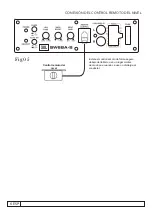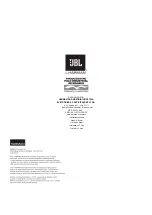
7 EN
TROUBLESHOOTING
If you experience operation or performance problems with this product, compare your installation
with the electrical wiring diagram on the previous pages. If problems persist, read the following
troubleshooting tips which may help eliminate the problems.
SYMPTOM
POSSIBLE REMEDY
Check to make sure you have a good ground connection.
Check that the Remote Input (Turn-On) has at least 5VDC.
Check that there is battery power on the (+) terminal.
Check that there is at least 12v.
Check all fuses, replace if necessary.
Make sure that the Protection LED is not illuminated. If it is lit, shut off
the amplifier briefly, and then repower it.
Turn down the volume control on the head unit to prevent overdriving.
Check that there is good air circulation around the amp.
Check for improperly grounded RCA interconnects.
Check that the Input Level Control is set to match the signal level of the
head unit.
Check that all fuses are OK.
Check that unit is properly grounded.
Check that the Remote Input (Turn-On) has at least 5VDC.
Check that the RCA audio cables are plugged into the proper inputs.
Reset the Level Control.
Check the Crossover Control settings.
Disconnect all RCA inputs to the power sub's control panel. If the hiss
disappears, then plug in the component driving the amplifier and unplug
its inputs. If the hiss disappears at this point, go on until the faulty/noisy
component is found.
It is best to set the amplifier's input level control as low as possible. The
best subjective signal-to-noise ratio is achieved in this manner. Try to set
the head unit as high as possible (without distortion)
This is usually caused by poor quality RCA cables, which can pick up
radiated noise. Use only the best quality cables, and route them away
from power cables.
Check that the RCA grounds are not shorted to the vehicle chassis.
Check that the head unit is properly grounded.
Protection LED comes
on when amplifier is
powered up.
Products will not
power up.
Squealing noise is
present.
Engine noise (static
type)
Engine noise
(alternator whine)
No output.
Low output.
High hiss in the sound.
Distorted sound.






































